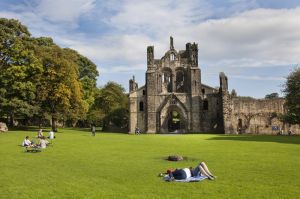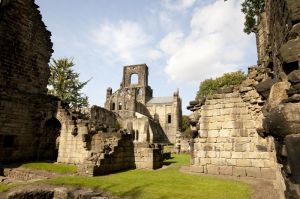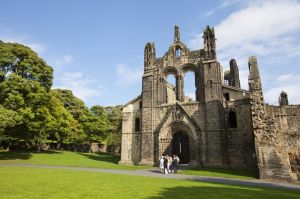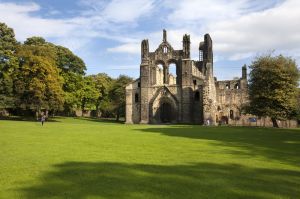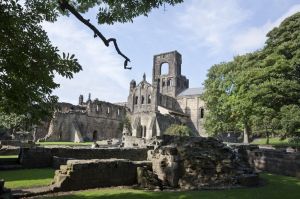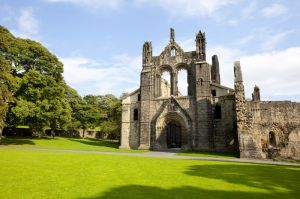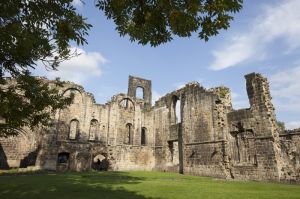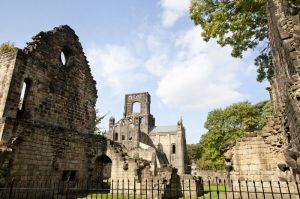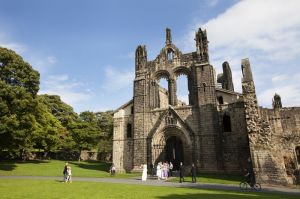During the 18th century the picturesque ruins attracted artists of the Romantic movement and were painted by artists including J. M. W. Turner, John Sell Cotman and Thomas Girtin. In 1889 the abbey was sold to Colonel John North, who presented it to Leeds City Council. The Council undertook a major restoration project and the abbey was opened to the public in 1895.
Kirkstall Abbey – Leeds
On 22 November 1539 the abbey was surrendered to Henry VIII‘s commissioners in the Dissolution of the monasteries. It was awarded to Thomas Cranmer in 1542, but reverted to the crown when Cranmer was executed in 1556. Sir Robert Savile purchased the estate in 1584, and it remained in his family’s hands for almost a hundred years. In 1671 it passed into the hands of the Brudenell family, the Earls of Cardigan. Much of the stone was removed for re-use in other buildings in the area, including the steps leading to Leeds Bridge.
